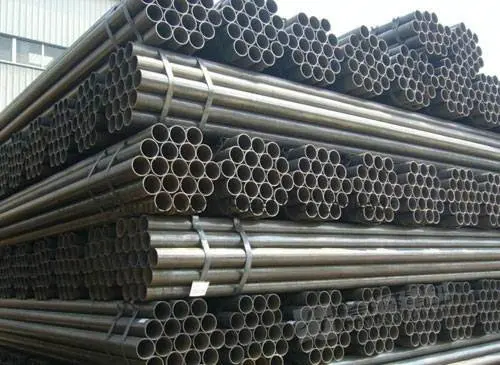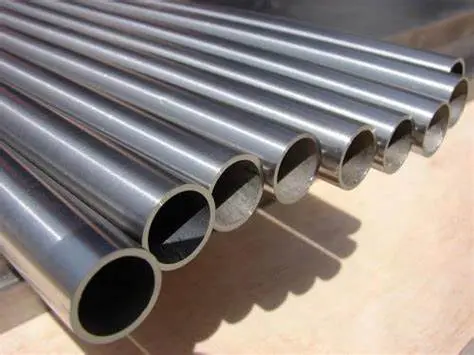Understanding Welded Tubing: Uses, Types, and Differences
Welded steel pipes are widely used in various industries due to their cost-effectiveness, versatility, and ease of production. They are manufactured by rolling steel strips or plates into a tubular shape and welding the seams. Below, we explore the different types of welded pipes, their applications, and how they compare to seamleSs Pipes.


Types of Welded Steel Pipes and Their Uses
1. General Welded Pipe
-
Material: Made from Q195A, Q215A, Q235A steel or other weldable mild steel.
-
Use: Primarily for transporting low-pressure fluids (e.g., water, gas, air).
-
Testing: Must undergo water pressure, bending, and flattening tests.
-
Surface Quality: Requires smooth finishes with minimal defects.
-
Delivery Length: Typically 4-10 meters, available in fixed or random lengths.
-
End Types: Threaded or non-threaded.
2. Galvanized Steel Pipe
-
Purpose: Enhances corrosion resistance compared to standard black pipes.
-
Types:
-
Hot-Dip Galvanized: Thicker zinc coating, longer-lasting.
-
Electro-Galvanized: Thinner coating, more cost-effective.
-
-
Applications: Water supply, construction scaffolding, fencing.
3. Oxygen Blowing Welded Pipe
-
Material: Made from 08, 10, 15, 20, or Q195-Q235 steel strips.
-
Use: Steelmaking oxygen delivery (small-diameter pipes, 3/8" to 2").
-
Corrosion Protection: Some pipes are aluminized for oxidation resistance.
4. Wire Conduit (Electrical Conduit Pipe)
-
Material: Carbon steel welded pipe.
-
Use: Protects electrical wiring in concrete and structural installations.
-
Sizes: Typically 13-76mm in diameter, thin-walled, often galvanized.
-
Testing: Requires cold bending tests for durability.
5. Metric Welded Pipe
-
Specifications: Sized similarly to seamless pipes (outer diameter × wall thickness in mm).
-
Material: Carbon steel, high-quality carbon steel, or low-alloy steel.
-
Types:
-
General: Used in structural components (e.g., drive shafts, fluid transport).
-
Thin-Walled: For furniture, lighting, and decorative applications.
-
6. Special-Shaped Tubes
-
Types: Square, rectangular, oval, and custom profiles.
-
Material: Carbon steel or 16Mn steel strip.
-
Applications: Agricultural machinery, steel doors/windows, construction frameworks.
7. Welded Thin-Wall Tube
-
Material: Stainless steel or carbon steel.
-
Use: Furniture, toys, lighting, railings, and decorative structures.
-
Advantage: Lightweight yet structurally stable.
8. Spiral Welded Pipe
-
Manufacturing: Formed by spirally winding steel strips and welding the seam.
-
Advantage: Allows large-diameter pipes from narrow steel strips.
-
Testing: Hydrostatic pressure, tensile strength, and cold bending tests required.
-
Applications: Oil and gas pipelines, water transmission.
Key Differences Between Seamless and Welded Steel Pipes
| Feature | Seamless Pipe | Welded Pipe |
|---|---|---|
| Manufacturing | Cold-drawn or hot-rolled in one piece. | Formed by welding rolled steel strips. |
| Appearance | Smooth interior, no weld seams. | Visible weld seams inside. |
| Pressure Rating | Higher (suitable for high-pressure systems). | Lower (typically ≤10 MPa). |
| Cost | More expensive due to complex production. | More economical. |
| Applications | High-pressure fluid transport, boilers, firearms. | Low-pressure fluids, structural uses, fencing. |
| Production Speed | Slower due to intricate process. | Faster and more scalable. |
Why Choose Seamless Pipes?
-
Strength: No weak points from welding.
-
High-Pressure Use: Ideal for oil & gas, power plants, and hydraulic systems.
-
Precision: Uniform wall thickness for critical applications.
Why Choose Welded Pipes?
-
Cost-Effective: Cheaper for low-pressure uses.
-
Versatility: Available in various shapes and sizes.
-
Lightweight: Suitable for construction and furniture.
Industry Trends and Future Outlook
-
Increased Demand for Spiral Welded Pipes: Growth in oil & gas infrastructure drives adoption.
-
Rise of Thin-Walled Stainless Steel Pipes: Expanding use in modern architecture and interior design.
-
Advancements in Welding Tech: Laser and automated welding improve pipe quality and durability.
As industries evolve, both seamless and welded pipes will remain essential, each serving distinct roles based on strength, cost, and application requirements.















